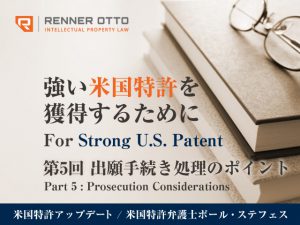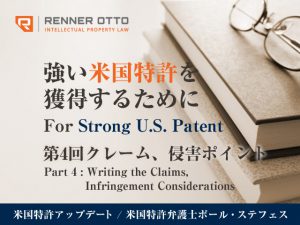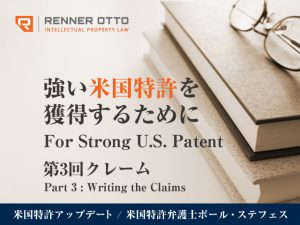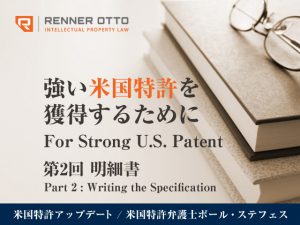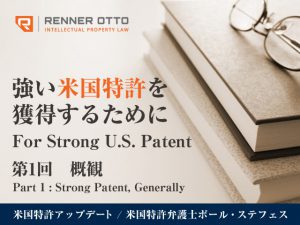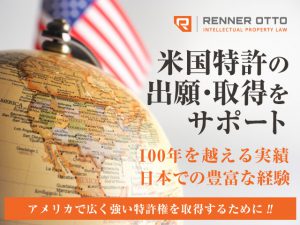米国特許弁護士のポール・ステフェスです。
今回は、日本のクライアントよりよく質問をいただく、IDS(Information Disclosure Statement / 情報開示陳述書)に関わる費用についてまとめました。お役に立てば幸いです。
IDS費用クイックリファレンス
(最新更新日 December 1, 2022)
1.初回オフィスアクションの前にIDSを提出:
‐特許庁費用はありません。
2.初回オフィスアクションの後、かつ外国オフィスアクション受理の3か月以内、そしてファイナルオフィスアクションもしくは特許許可通知の前にIDSを提出:
‐特許庁費用はありません。
3.初回オフィスアクションの後、かつ外国オフィスアクション受理の3か月以降、そしてファイナルオフィスアクションもしくは特許許可通知の前にIDSを提出:
‐IDSの特許庁費用は260ドルです。
4.ファイナルオフィスアクションもしくは特許許可通知の後、かつ外国オフィスアクション受理の3か月以内、そして発行手数料支払いの前にIDSを提出:
‐IDSの特許庁費用は260ドルです。
5.ファイナルオフィスアクションもしくは特許許可通知の後、かつ外国オフィスアクション受理の3か月以降、そして発行手数料支払いの前にIDSを提出:
‐RCE と IDSの特許庁費用は1,360ドルです。
6.発行手数料支払い後にIDSを提出:
‐QPIDS請願の特許庁費用は140ドル、そして“conditional” RCEの特許庁費用は1,360ドルです。
【英語原文】
IDS Quick Reference
(Last revised December 1, 2022)
1.For an IDS filed before a 1st Office Action:
– there is no government fee.
2.For an IDS filed after a 1st Office Action, and within 3 months of receipt of a foreign Office Action, and before a FINAL Office Action or a Notice of Allowance:
– there is no government fee.
3.For an IDS filed after a 1st Office Action, and after 3 months of receipt of a foreign Office Action, and before a FINAL Office Action or a Notice of Allowance:
– $260 government fee for an IDS.
4.For an IDS filed after a FINAL Office Action or Notice of Allowance, and filed within 3 months of receipt of a foreign Office Action, and before the Issue Fee has been paid:
– $260 government fee for an IDS.
5.For an IDS filed after a FINAL Office Action or Notice of Allowance, and filed after 3 months of receipt of a foreign Office Action, and before the Issue Fee has been paid:
– $1,360 government fee for RCE and IDS.
6.For an IDS filed after payment of Issue Fee:
– QPIDS Petition government fee $140 and “conditional” RCE government fee $1,360.
———————————————————————————————–
日本から米国特許の出願、行使・鑑定・侵害防御をご検討のみなさま
———————————————————————————————–
【100年の実績】を誇る、レナーオットー米国特許事務所へ
1880年創設、少数精鋭の米国特許事務所。日本企業のサポートをさせていただいています。豊富な経験 高い登録率、高品質でリーズナブル。相談・お見積り無料・日本語でご連絡ください。
ポール・ステフェス
レナーオットー米国特許事務所 パートナー
https://paulrennerotto.com/
psteffes [@] rennerotto.com

